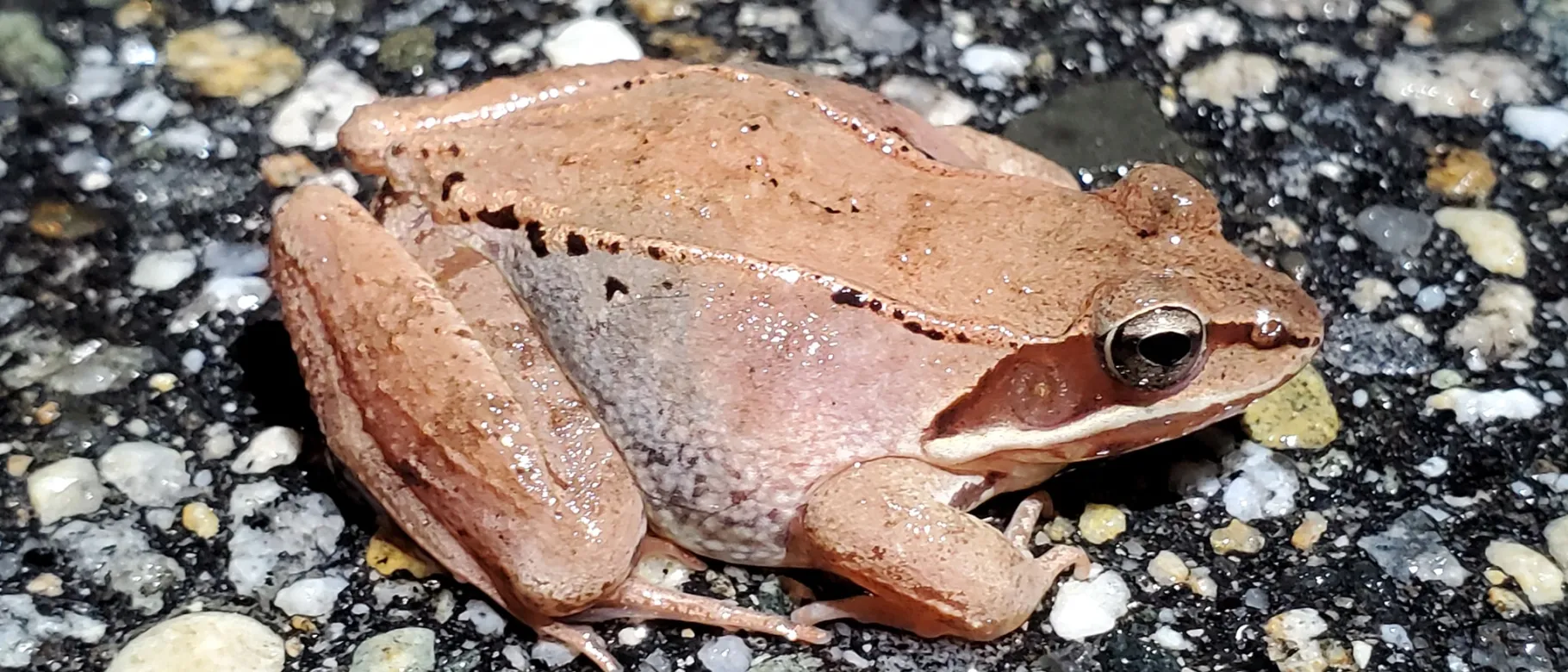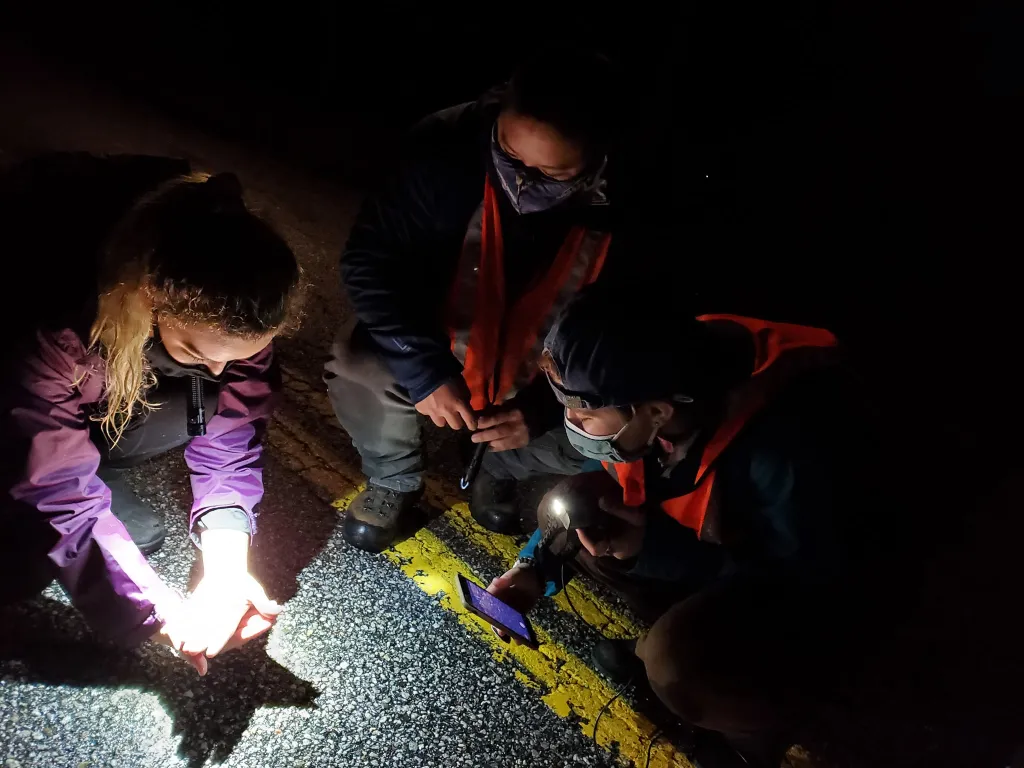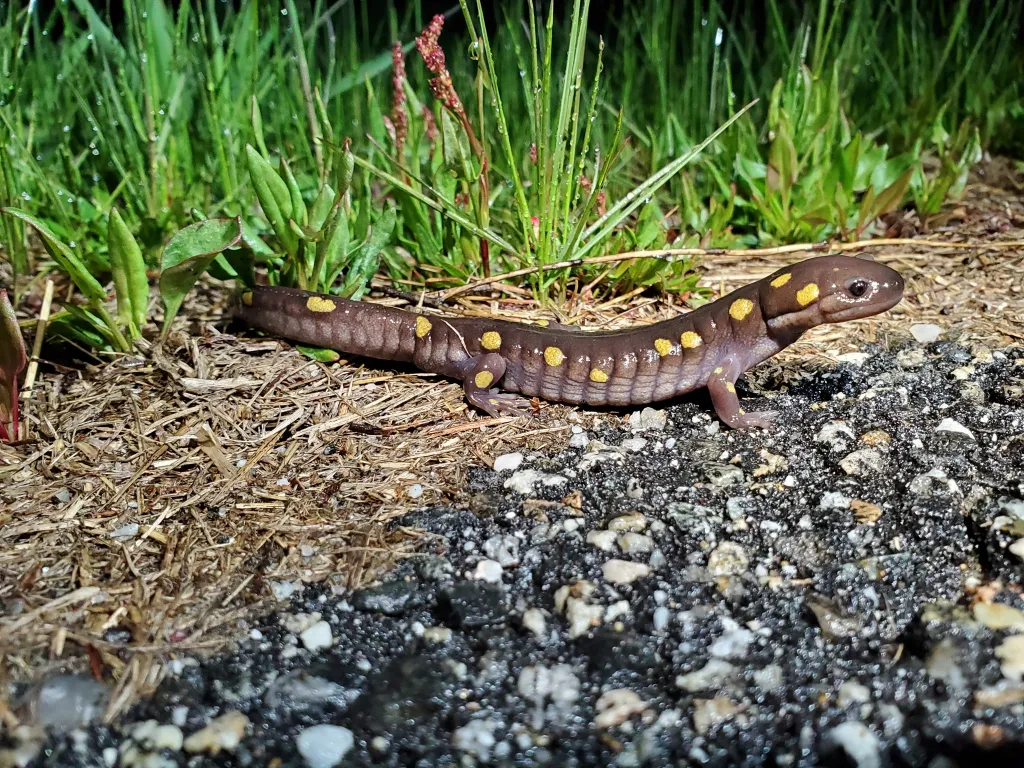Fewer frogs died due to traffic at start of pandemic, study involving UNE professor finds

A University of New England professor is part of a team of researchers that found significantly fewer frogs died from vehicle collisions during the early days of the COVID-19 pandemic, when lockdowns caused much of human activity to cease in what has been dubbed the “anthropause.”
Jeffrey Parmelee, Ph.D., associate teaching professor in the School of Biological Sciences, along with researchers from the University of Maine, recently published research in the journal Conservation Science and Practice that found a 50% reduction in amphibian traffic deaths when compared to previous years, driven primarily by reductions in frog mortality. Deer and moose collisions with vehicles also showed a dramatic decrease during early spring 2020.
The researchers used data accumulated from the annual Maine Big Night, an amphibian migration monitoring event founded by UMaine graduate student Greg LeClair, who is lead author on the research publication “Influence of the COVID-19 pandemic on amphibian road mortality,” on which Parmelee is also a contributor.
Since 2018, Maine Big Night has drawn hundreds of citizen scientists to hundreds of designated areas across the state to track the migratory patterns of amphibians as they cross roads during their annual spring migrations. On warm, rainy spring nights in 2021, 316 volunteers surveyed 185 stretches of roads in Maine. Volunteers with the project counted the number of injured and dead amphibians they found and recorded their data, as well as moved the animals safely across the road.
Vehicle traffic makes these migrations, which occur from March to May, particularly dangerous for frogs and salamanders, and many of the animals are killed as they cross roads. With this in mind, the research group used traffic data from the Maine Department of Transportation, along with data on the number of injured/dead amphibians before, during, and after spring 2020 to determine if there were differences in mortality rates as traffic declined.
Researchers found that, while there were half as many overall amphibian fatalities in spring 2020 as there previously were, there was little change in the deaths of salamanders. They have several hypotheses about why frogs saw a bigger benefit to the reduced traffic levels, Parmelee said, including possible bias in the data as dead frogs, with their light-colored undersides, may be easier to spot by observers, but more research is needed to answer that question.
Parmelee, who has for several years sat on the scientific advisory board of the Maine Big Night project, said that this study came about when the group noticed that there seemed to be lower mortality rates the spring of 2020.
“This was a serendipitous situation where we could take advantage of a natural experiment and directly demonstrate the importance of traffic, during the critical time of spring migrations, on amphibian mortality.” Parmelee remarked. “It’s also a great example of how non-scientists can contribute to scientific discoveries; there is tremendous enthusiasm of the hundreds of volunteers in the spring who bring their kids and friends out on warm, rainy nights to both help preserve these beautiful, usually hidden creatures and contribute long-term data on populations across the state.”
In addition to the article in Conservation Science and Practice, Parmelee is also an author on a paper just published in the journal Conservation Biology, entitled “Global COVID-19 lockdown highlights humans as both threats and custodians of the environment,” where data from Maine amphibians was used to help reveal the complex mixture of positive and negative effects of the pandemic lockdown on nature around the world.

